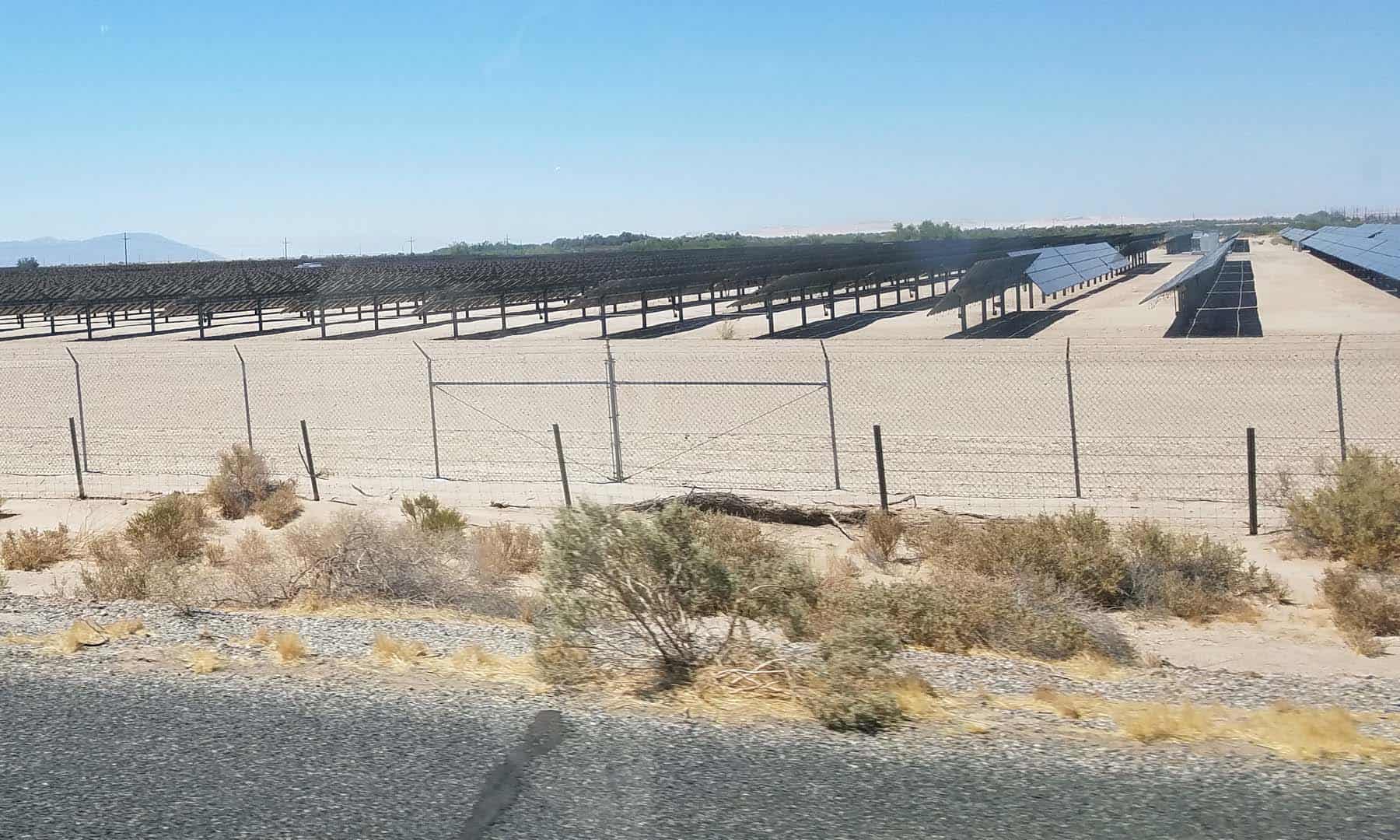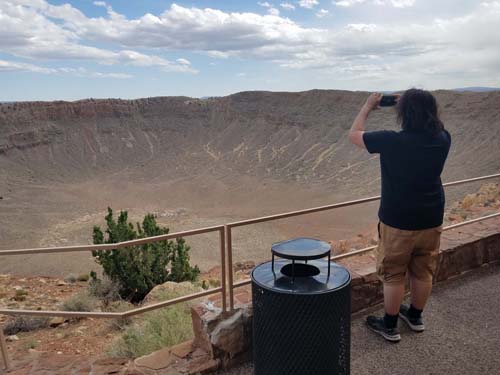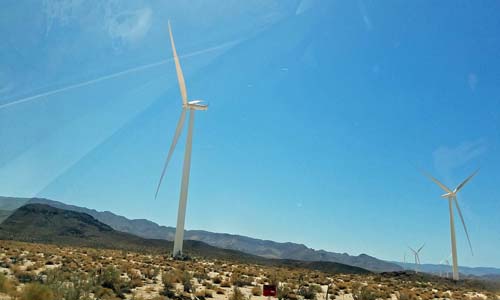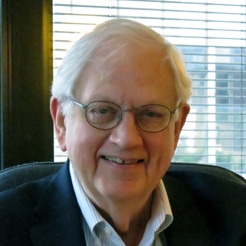
Driving Across America in a Time of Change
On May 14, I set out on a cross-country road trip with my son, Thomas. It centered on visiting my other son, Dan, who had moved to Prescott, Arizona. While I have flown to numerous cities and states across the United States, I had never tried the drive, which would give me a real sense of this great nation. Doing so was a long time on my bucket list. So, in our rented AVIS SUV, with COVID masks and credit card for very expensive gasoline in hand, we started out from Bethesda, Maryland, driving a southern route on Interstate-80 through Virginia; then on I-40 and partly historic Route 66 across Tennessee, Arkansas, Oklahoma, Texas, New Mexico, and Arizona; and then on to California on I-8 and meeting the Pacific Ocean in San Diego, California.
In addition to the joy of spending time with my sons, the trip gave me a real sense of important aspects of the country and trends that I see, many related to energy and the environment that are progressing in a frighteningly wrong direction.
The country is tremendously large and diverse. From the green ancient mountains of western Virginia and eastern Tennessee, the terrain levels out as it nears western Tennessee and the Mississippi flood plain. This bleeds onto a flat plateau in Arkansas punctuated by the Ozark Mountains. It then joins Oklahoma in its northeastern quadrant, a former Indian Territory and home to many displaced tribes from the East. Oklahoma is where oil country, for the most part, begins. As does the prairie—with its short and long grass varieties.
The grasses were uniformly brown. Brown as far as the eye could see – dried out making excellent tinder. It was particularly windy and cool throughout Oklahoma and the northern panhandle of Texas where we stopped overnight in Amarillo for a delicious steak dinner. Then on to New Mexico to visit old friends in Santa Fe where we began to experience the effects of massive wildfires. The Las Vegas fire filled the horizon with an ominous layer of smoke as we approached Santa Fe, a major tourist destination. A mix of Mexican and Hispanic Americans, numerous Native American indigenous tribes, and whites – descendants of recent arrivals – and of course tourists. Given this mix, Santa Fe has taken effective steps to preserve its heritage.
Starting in Oklahoma through the Texas panhandle and on to New Mexico, Arizona, and southwest California, we were surprised to see vast arrays of windmills and fields of solar panels that dot the landscape. These forms of renewable energy are increasingly becoming a major part of local and regional economic development.
A good part of the trip was spent in and around Prescott, Arizona, where Dan lives. Prescott is half-way between Flagstaff to the north, featuring abundant trees and green flora, and Phoenix to the south, which is extremely dry and desert like (trade cactus for trees) and where some 4.6 million persons live, including some old friends from my hometown, Dunkirk, New York. Green Flagstaff is now the location for Arizona’s largest wildfire. Go figure.

On the way into Prescott, we stopped at Meteor Creator, an amazing half-mile wide and 500-foot-deep hole in the prairie, formed by a meteor that collided with the earth some 50,000 year ago. While in Prescott, we also visited the south rim of the Grand Canyon, looking down on the Colorado River with its much-reduced flow due to the long and severe drought. We were impressed with Montezuma’s Castle, a small national monument that is centered on a pre-Columbian cliff-dwellers community of the Sinagua tribe. Another poignant stop was the Granite Mountain Hotshots Memorial near Yarnell, Arizona, where in 2014, 19 local fire fighters lost their lives fighting flames that overwhelmed them. Forest fires in the American west are considerably more frequent and deadly in 2022, and we have still not reached the summer months with predictions of increased wildfires in 10 western states.
Our next stop in Arizona was Sedona where incredible natural rock formations called buttes of all colors dominate the terrain. I had visited Sedona about 20 years ago (my first- and last-time eating rattle snake). Finally, we toured downtown Prescott, which has turned some two blocks of a former downtown commercial area into an historic “saloons and cafes” area. We had lunch at the bar at The Palace, where Wyatt Earp and Doc Holiday were said to frequent. We can now add the England boys to the list. Then, Thomas and I toured the Veterans Administration Regional Hospital with Dan who is employed there. It has an attractive campus of white buildings that was converted from an old Army Post, which, in turn, had been taken from Native Americans long ago.
The final leg of our trip took us from Prescott to El Cajon, just outside San Diego. Driving south to Phoenix, we joined I-8, which is the southernmost Interstate East-West highway, and passes through dry prairies and open desert, skirting the Mexican Border. We were reminded of the illegal immigration problem when entering California with a Border Patrol screening station on the interstate just past Yuma. El Cajon and San Diego, California, are part of still another giant metro region with more than 3.3 million inhabitants. Home to the U.S. Navy’s largest Pacific base, the region serves as the southern end of the California coastal megalopolis, much of which is dependent upon the waters of the Colorado, Rio Grande, and other depleted river basins in the region. Visiting sister Sue and her husband, Ken, retired from the Navy, and other family members was a highlight of the trip.
My lasting impressions from the trip start with the Southwest’s overwhelming beauty. As an Easterner, one cannot be but impressed by how much Southwestern culture has been influenced by the sons and daughters of the pioneers, and by Hispanic and Native Americans who share it to this day and how these peoples interrelate. Much of the land in the region is in the hands of the Federal government in the form of national parks, forests, and monuments, which are great national assets, and in reservations promised to Native Americans.
But this region of the United States, like many similar throughout the world, is severely challenged. Today, it is experiencing hot, dry, and windy weather that is unprecedented in recent times. Termed the “Southwestern North American Megadrought,” that began around 2000, it is getting worse, draining reservoirs, feeding wildfires, and endangering valuable agricultural production that the whole nation and much of the world relies on.
It is also gaining population through in-migration and undergoing urbanization (i.e., Phoenix and San Diego), while at the same time struggling to meet basic requirements of human life – particularly adequate water.
Although the Southwest is increasingly populated with windmills by the thousands and solar farms, its oil industry is still a major economic pillar and the region remains overly dependent on hydropower (i.e., Hoover and Glen Canyon Dams on the Colorado River, creating Lakes Mead and Powell and up to one hundred other dams on the Colorado River and its tributaries) to be sustainable.

Rapid population and urban growth are worsening the water and energy situation. These trends cannot continue without great costs to the public, directly to consumers, or through their governments.
Scorched grass and timberlands, dry air, and intense winds have made the region a tinderbox for wildfires that are projected to only increase during the torrid summer months.
These problems are indicative of the challenged environment worldwide, enhanced by climate change and population growth. This is particularly true in the developing countries of Africa, Asia, and Latin America – societies that are far less capable to cope with them.
For two centuries, the American Southwest has served the United States by providing energy and a magnificent open country. Now, the region is going through a period of unprecedented drought and rising temperatures. Wildfires are only one indication of its stress. In subsequent blogs, I will detail some of these challenges that have both national and international implications.
- About the Author
- Latest Posts
Thomas C. England, ME&A’s Chief for Strategy and Innovation, has more than 40 years of experience in policy and management positions in both the public and private sector with specific expertise in international development programs. He is one of ME&A’s co-founders and served as CEO and President, and as Chairman of the Board of Directors, for more than 30 years.



